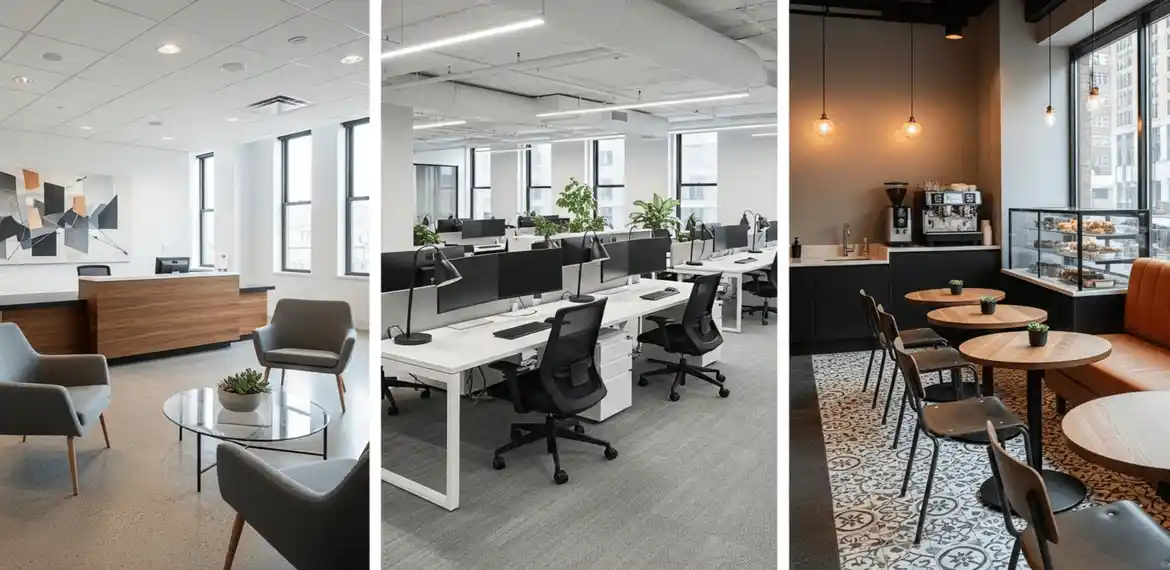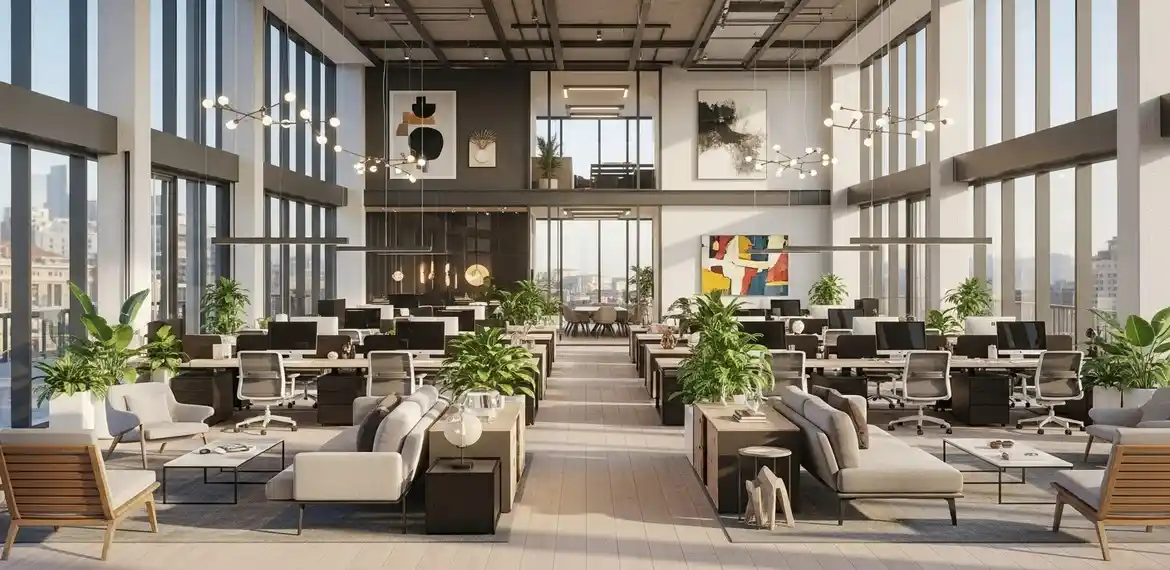Every great workspace begins with a clear vision and a well-planned budget. Commercial interior design budget planning isn’t just about managing expenses, it’s about creating spaces that inspire your team, impress your clients, and reflect your brand’s identity. A solid plan helps you make wise choices, avoid unexpected costs, and achieve a professional finish that feels worth every dollar.
In Singapore, where the interior design cost can vary depending on materials, style, and scale, planning makes all the difference. It allows you to focus your budget on what truly matters, durable finishes, efficient layouts, and thoughtful design details that enhance comfort and productivity.
Define Your Scope Before the Numbers

Before diving into costs, take a step back and picture what you want your space to achieve. Are you designing a welcoming reception for clients, an energising open-plan office, or a relaxed café corner for staff? Having a clear vision shapes every design and spending decision that follows.
Smart budgeting for office interiors always begins with understanding your purpose. Think about how each area will be used, the mood you want to create, and the impression you want to leave on clients and employees alike. When your goals are clear, your commercial renovation budget becomes easier to control, helping you spend where it truly counts and save where it won’t compromise the overall impact.
Understanding the Real Costs Behind Your Design
Every interior project involves more than what you see on the surface. Beyond the paint and furniture, there is a range of essential expenses that shape your total commercial renovation budget. Understanding where your money goes helps you plan smarter and stay in control from start to finish.
Here’s a simple project cost breakdown (Singapore) to guide your planning:
- Design & Consultation – Fees for interior designers, architects, and project consultants.
- Materials & Finishes – Flooring, lighting, fixtures, paint, and decorative details.
- Labour & Construction – Skilled professionals who bring your design to life.
- Furniture & Décor – Desks, chairs, partitions, and custom-built pieces.
- Permits & Inspections – Required approvals for safety and compliance in commercial spaces.
Having a clear view of these categories provides a realistic cost estimation for interior projects, helping you avoid unpleasant surprises and keep your design vision within reach.
Hidden Renovation Costs You Should Plan For
Even with careful budget planning for commercial interior design, a few expenses often slip through the cracks. Knowing them early keeps your project on track.
Watch out for:
- Electrical or Plumbing Upgrades – Older systems may need to be replaced once work begins.
- Delivery and Assembly Fees – Furniture and fittings often come with transport or setup charges.
- Storage Costs – Extra space may be needed if items arrive before installation.
- Permit or Inspection Fees – Some approvals add to the total commercial renovation budget.
- Design Changes or Delays – Adjustments mid-project or supplier holdups can push costs up.
- Disposal and Cleaning – Post-renovation waste removal is rarely included in quotes.
Keeping a 10–15% contingency fund helps cover these surprises without disrupting your overall plan.
If you want to avoid common budget problems, it also helps to understand the typical mistakes people make during commercial renovations. You can explore a simple guide on commercial interior design mistakes to prepare better and avoid costly errors.
Working with Designers Without Overspending

A good designer does far more than make a space look beautiful; they help you build it wisely. If you’re managing your interior design cost in Singapore, find someone who’s upfront about pricing and comfortable working within your budget. Transparency builds trust and helps you avoid costly surprises later on.
When hiring an affordable commercial interior designer, always ask for:
- Detailed quotations that clearly outline labour, materials, and scope.
- Material samples or mood boards so you can visualise quality before committing.
- A realistic project timeline that fits your schedule and avoids rushed decisions.
To make the selection process easier, here’s a helpful resource on how to choose the right commercial interior design company so you can make a confident and informed decision.
If you want expert guidance on commercial interior design in Singapore, explore J Design’s interior design services for tailored solutions that suit your budget and style.
Ways to Save Money on Commercial Interiors
Saving doesn’t mean cutting corners; it’s about spending wisely and making choices that add long-term value. Minor adjustments can significantly impact your commercial space renovation costs, helping you stay within budget without compromising style or function.
Here are a few clever ways to make your money go further:
- Reuse and Refurbish: Refresh existing furniture, fixtures, or partitions instead of replacing everything.
- Mix High and Low: Splurge on a few standout pieces and pair them with cost-friendly essentials.
- Go Energy-Efficient: Use LED lighting and smart systems to lower running costs over time.
- Plan Ahead: Order materials early to avoid last-minute price hikes or rush fees.
- Keep It Flexible: Choose modular furniture or adaptable layouts that can evolve as your business grows.
These thoughtful decisions not only stretch your commercial renovation budget but also create a space that feels smart, stylish, and sustainable.
Keep Track of Your Spending as You Go
Once your project is underway, staying involved makes all the difference. Regular check-ins and open communication help you stay in control of your budget and prevent minor issues from becoming big expenses.
Here’s how to manage your interior design expenses effectively:
- Track Payments and Milestones: Review invoices and updates weekly to stay informed.
- Use Budgeting Tools: A simple spreadsheet or budgeting app helps you monitor costs in real time.
- Stay Organised: Keep all quotes, receipts, and contracts in one place for easy reference.
- Review Regularly: Compare your planned and actual spending to spot overruns early.
Taking an active role keeps your commercial renovation budget steady and your project running smoothly from start to finish.
Conclusion
A successful workspace starts with smart budget planning for commercial interior design. By defining your goals, understanding real costs, and preparing for hidden expenses, you create a strong foundation for a smooth project. Working with the right interior designer, tracking your spending, and making practical, value-driven choices help you get the most from your commercial renovation budget. In Singapore, where interior design costs can vary greatly, careful planning makes every dollar count toward lasting quality and design that truly reflects your brand.
FAQs
What is the first thing to consider when planning a budget?
The first step is to define your goals and scope. Know what you want your space to achieve, which areas are priorities, and the overall style or function. Clear goals help you allocate your commercial renovation budget wisely.
What is the 70-30 rule in interior design?
The 70-30 rule suggests allocating 70% of your budget to long-lasting, functional elements like furniture, flooring, and layout, and 30% to decorative or flexible items that can be easily updated.
What are the five basic elements of a budget?
A budget typically includes five key elements: total income or available funds; fixed costs that cover essential expenses; variable costs for flexible or optional spending; a contingency fund to cover unexpected expenses; and tracking or monitoring to ensure you stay on target.
What are the 3 F’s of interior design?
The 3 F’s stand for Function, Form, and Feel. A well-designed space balances practicality (Function), visual appeal (Form), and atmosphere or mood (Feel), all within your budget.
